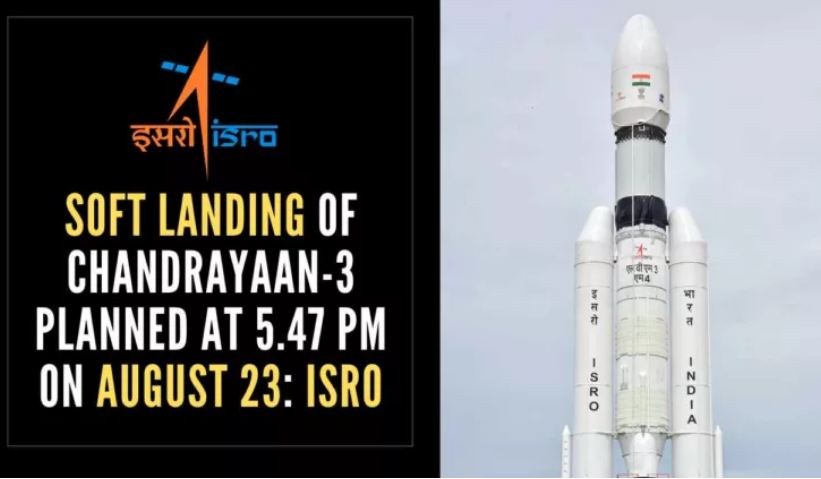The journey of India’s lunar spacecraft, Chandrayaan-3, began at 2.35 pm (local time) on Friday. It is expected to travel approximately 3,84,000 kilometres from Earth to the Moon over a period of about 40 days. The spacecraft aims to achieve a soft landing at 5.47 pm (Indian time) on August 23.
During a post-launch media interaction, Dr S Somanath, the Chairman of ISRO, disclosed the targeted landing time, provided that everything goes according to plan. Chandrayaan-3 has a mission life of one lunar day, equivalent to 14 Earth days. Its intended landing site is near the lunar south pole, approximately at 80 degrees latitude.
The successful touchdown of the mission’s ‘Vikram’ lander at the beginning of the lunar day is crucial. This timing enables the utilization of available sunlight through solar panels and batteries, allowing the operation of science payloads, sensors, data collection, and communication with Earth.
Lunar landing is a complex procedure and presents various challenges. The gravity on the Moon is only 1/6th of that on Earth, meaning that an object weighing 60kg on Earth would weigh merely 10kg on the lunar surface.
The process of lunar landing relies on the spacecraft’s onboard programming and decision-making, as real-time communication from Earth is not feasible. The uneven terrain, presence of rocks, mountains, and boulders on the lunar surface further complicate smooth landings.
Nevertheless, ISRO learned valuable lessons from the Chandrayaan-2 mission, which experienced difficulties during its attempted soft lunar landing. Consequently, extensive testing was conducted on the Chandrayaan-3 lander to enhance its ruggedness, robustness, and tolerance to failures.
“We have taken measures to ensure that the landing legs of Chandrayaan-3 can withstand landing impacts of up to 3 meters per second. Unlike Chandrayaan-2, which had a five-engine configuration, Chandrayaan-3 is equipped with four engines. Additionally, while the previous lander relied on a single engine for soft-landing, this mission will utilize two engines.” – M Sanakaran
To date, the accomplishment of soft-landing crafts on the Moon has been achieved solely by the United States, Russia, and China. The United States, in particular, has successfully executed multiple manned lunar missions and is actively revitalizing its manned program through the upcoming Artemis Program, which aims to return astronauts to the Moon.












